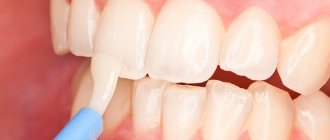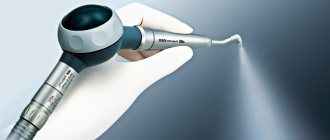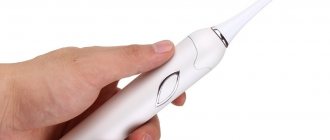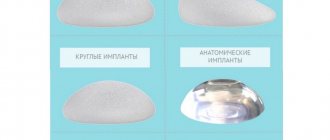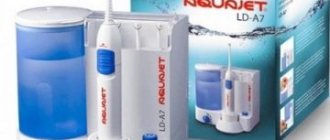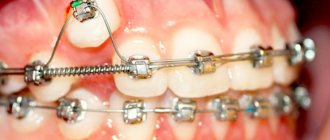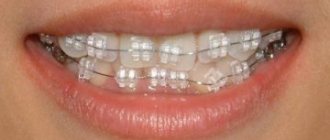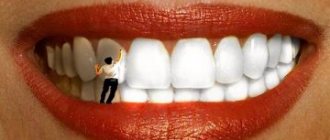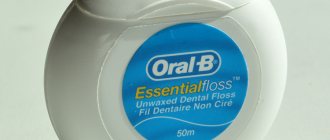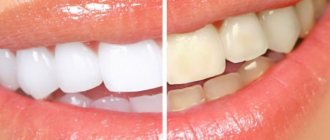Home / Food additives (E) / Stabilizers, emulsifiers (E-400 - E-599)
Back
Published: 01/13/2017
Reading time: 12 min
0
2879
When buying shampoo, toothpaste or dishwashing liquid, few people study their composition. But the fine print contains interesting information: the second in the list of ingredients (after water) is almost always a substance designated by the Latin letters SLS. The product is known as food additive E 487. This is what gives a thick foam and removes fat. At the same time, it has a harmful effect on the skin, mucous membranes of the eyes and oral cavity.
Long-term use may cause brain damage.
- The product's name
- Type of substance
- Properties
- Package
- Application Cosmetics industry
- Production of household chemicals
- Pharmaceuticals and medicine
Composition of shampoos
On the front side of all bottles, manufacturers write only part of the composition - this is an advertising ploy. For example: “with lavender oil”, “with vitamins”, “with a regenerating complex” and other noticeable inscriptions. But in order to find out the real composition, you need to look at the back of the bottle, where all the components of the washing liquid are listed. Almost 100% of all gels and shampoos consist of:
- Water is a universal solvent.
- Surfactants – they foam and effectively wash away oil from hair. These are just various sulfates, including lauryl sulfate. It is almost always present in shampoo.
- Preservatives are substances that provide a long shelf life.
- Auxiliary components are fragrances and dyes.
Who should not use shampoos with SLS?
Despite the fact that SLS is included in the list of safe ingredients in many countries, including the USA and Russia, there are categories of people who are not recommended to use hair products with aggressive sulfates in their composition:
- girls with curly hair. Lauryl sulfate increases hair frizz, which curly girls will have no use for;
- people with sensitive scalp;
- people with dermatological diseases. The Department of Dermatology in Copenhagen found that lauryl sulfate is much more aggressive on such skin. This is primarily due to the fact that diseased skin loses more moisture due to evaporation into the environment;
- comedones. Sulfates can provoke an increase in their number;
- children due to the high risk of irritation.
In other cases, you need to rely on common sense, existing scalp problems, and hair needs. If, say, you wash your hair with sulfate-free shampoo and after it apply a mask with silicones, keep in mind that your detergent will not remove silicones the next time you wash it - it simply does not have enough cleaning power for this.
If all the cosmetics used are “clean” - do not contain silicones, waxes and other substances that are difficult to wash off, then you can completely refuse sulfates so as not to risk the hair structure and not worry about possible peeling.
One way or another, SLS is not the biggest danger in cosmetics, but if there is a chance to avoid the negative effects of sulfates, it’s worth taking advantage of.
Sulfates in shampoos
So, what is sodium lauryl sulfate in shampoo? In fact, the washing liquid may contain one of the following components:
- SLS - sodium lauryl sulfate, lauryl sulfate, salt of lauryl sulfuric acid. The powder is white, in solution with water it gives a yellow or brown color. The substance is flammable, biodegradable and does not form toxic compounds during decomposition.
- SDS is the same lauryl sulfate, but under a different abbreviation. Aka sodium dodecyl sulfate, sodium dodecyl sulfate.
- SLES - sodium laureth sulfate, sodium laureth, sodium lauryl sulfoacetate - is found in shampoos and gels as often as SLS, but is considered softer and more gentle.
- ALS - ammonium dodecyl sulfate, ammonium lauryl sulfate in shampoo - a high-foaming surfactant. At elevated concentrations, it can cause irritation to the eyes, skin, and breathing difficulties. Harmful if swallowed.
- ALES is an analogue of ALS in gels and shampoos, ammonium laureth sulfate, or ammonium laureth sulfate.
- SMS and SMES are milder surfactants, sodium sulfate and myristyl ether sulfate.
All these substances have the same property - they produce a thick, very gentle foam that quickly washes away dirt and grease from the hair.
Properties
| Index | Standard values |
| Color | white, sometimes with a yellowish tint; yellow-brown in aqueous solution |
| Compound | empirical formula C12H25SO4Na |
| Appearance | viscous transparent liquid |
| Smell | characteristic |
| Solubility | good in water to form an opalescent solution; average in alcohols; insoluble in ether, benzene |
| Main substance content | at least 70% |
| Taste | absent |
| Density | 1.01 g/cm³ |
| Other | heat resistant; stable in acidic and alkaline environments; When interacting with water, it forms a stable foam |
What are they needed for in shampoo?
All sulfates are added to shampoos and body washes for specific purposes. The effect of sodium lauryl sulfate in shampoo is as follows:
- Degreasing. The chemical formula of all these substances is such that surfactant molecules capture fat particles and bind them with water, thereby providing cleansing. Thus, all products with sulfates have good cleaning properties and easily remove dirt from any part of the body - hair, skin, teeth, etc.
- Thick, voluminous foam. When foamed with water, sulfates produce a good foam, which is especially appreciated in products such as gels, liquid soaps and shampoos.
- Composition stabilization. In the presence of sulfates, all other components, even oily ones, mix well and retain their beneficial characteristics.
But the main and very important property of sulfates for all manufacturers of washing products is their low price. This allows you to include them in any detergent for washing anything.
Let's sum it up
Now you know which products to trust with your hair and how to identify a sulfate-free shampoo. You have the right to choose, I have the right to advise. Don't be categorical. The composition of shampoo without sulfates is more environmentally friendly, of course, but it is not able to cope with severe pollution (especially caused by hair styling and fixing products). The best option is to combine organic matter and salts. Or refuse any chemicals that come into contact with hair: varnishes, gels, mousses, cosmetics with silicones. Personally, I feel weak, and you? 
I prepared the review for you, Nastya Vorobyova. Thank you all for your attention and... we will discuss parabens and silicones soon! =)
I like 88
Where else is lauryl sulfate used?
Most shampoos contain either SLES or SLS. Both components can be present in different concentrations depending on the declared properties of the shampoo: for oily hair the concentration is higher, for normal and dry hair the concentration is lower. Also, these substances, like other sulfates, are used in other cosmetic products, for example, in shower gels, pastes, liquid soaps, creams, etc.
In the food industry, sodium laurelsulfate is an additive E487, a stabilizer. The substance should not be eaten as it tends to accumulate in the liver and spleen and causes significant damage to health. Its harm has been proven and it is banned in most countries. However, sodium lauryl sulfate can still be used in the production of household chemicals, as well as in clinical trials as an irritant.
Areas of use
Preservative E221 is used together with the chemical additive E220 or sulfur dioxide in the food industry for processing fresh fruits or vegetables.
The surface of products is treated to prolong their storage, prevent darkening of various areas and slow down the formation of melanoidins. This chemical preservative is also included in frozen or dried foods as a refrigerant.
Many confectionery products with a low percentage of sugar, such as marmalade or jam, beer, juices, gelatin, liquid pectin, mushroom and potato products, sausage and salted fish are also better preserved due to the presence of sodium sulfite in their composition. Often this chemical is used as a preservative and in those sweets where the sugar level is too high. Preservative E221 is used for preparing seasonings based on lemon juice and canned seafood.
E221 also works great in the wine sector. If sodium sulfite is added to the wine material during wine production, acetaldehyde will bind. The result of such processes will be wine with good color, excellent oxidation-reduction potential and stability at the microbiological level. Also, wines with E221 in their composition are stable against the occurrence of any bacterial changes in them.
In other industries, sodium sulfite is used as a bleach for canvases, a developer for photographs, a component of pesticides used in agriculture, and a means for producing non-ferrous metals in the metallurgical industry.
The chemical can be used to produce detergents, deposit chromium in sewer passages, produce pharmaceuticals in the medical sector, and produce leather and chemical products in other industries.
What is the difference between lauryl sulfate and laureth sulfate
The ethoxylated sodium lauryl sulfate in shampoo is sodium laureth sulfate (SLES). Lauryl sulfate itself is a product derived from petroleum or coconut raw materials. What is the difference between substances obtained from different raw materials? As surprising as it may be to hear, they are no different in chemical composition, and their origin does not in any way affect their positive and negative qualities.
Sodium laureth sulfate is considered a less harmful ingredient than SLS, but it is not as safe as manufacturers claim.
Type of substance
Additive E 487 is an emulsifier, an anionic amphiphilic compound.
The substance significantly reduces the surface tension of aqueous solutions. This facilitates the formation of emulsions, promotes their stabilization, and prevents repeated separation of the colloidal system. When combined with water, the substance forms a stable foam that is not prone to settling. Sodium lauryl sulfate is a mixture of alkyl sulfuric acids. Contains predominantly sodium dodecyl sulfate (up to 85% of the total acids), so these two names are considered synonymous.
Emulsifier E 487 is a product of complex chemical synthesis. The process of obtaining the substance consists of sulfating lauryl alcohol with the strongest reagent - sulfuric acid monochloride. The resulting alkyl sulfates (esters of sulfuric acid) are neutralized with an aqueous-acetone solution of sodium carbonate, crystallized and dried.
The additive belongs to the group of synthetic substances.
Important! Some manufacturers position the substance as natural, obtained from coconut oil. This is not true. Lauryl alcohol is indeed found in some vegetable oils (palm, citrus, coconut), but on an industrial scale it is synthesized from ethylene.
Harm from sulfates in detergents
Why are sulfates so dangerous? The most dangerous among them are SLS, ALES, ALS. It has been proven that sodium lauryl sulfate added to shampoos can cause the following problems:
- This substance, in fact, acts as an oxidizing agent, due to which the hair and skin are cleansed. At the same time, an oxide film remains on the surface, which can cause itching, burning, redness and various allergic reactions, and with prolonged use on sensitive skin - dermatitis.
- SLS, ALES, ALS destroy hydrolipid protection on the skin.
- SLS, ALES, ALS dry out hair, making it hard and brittle.
- When using products that contain sulfates of this group, scalp diseases and dandruff occur more often.
- Since SLS, ALES, ALS greatly degrease the hair, the sebaceous glands on the head begin to work more actively. This leads to the fact that the hair at the roots quickly becomes oily, which necessitates the use of shampoo. It turns out to be a vicious circle.
- SLS is able to penetrate deep into the body and accumulate in various tissues. When the concentration increases, it causes a change in the composition of cells and can cause the appearance of cataracts and even tumors.
Note: even the manufacturers who actually put sodium lauryl sulfate in shampoos and gels note that this substance is not completely safe, but this is not a reason for mass hysteria. In general, SLS is an irritant but not a carcinogen. It can cause certain problems in people prone to dermatitis, sometimes contributes to the formation of ulcers in the mouth (as part of toothpaste), and there is local data from the USA that at a certain concentration of SLS increases the risk of cataracts. However, according to experts from Cosmetic Ingredients Review, neither sodium lauryl sulfate in shampoo nor ammonium lauryl sulfate produces a carcinogenic or embryotoxic effect. Whereas the irritant effect increases with increasing concentration and duration of exposure.
As for SLES (sodium laureth sulfate), it was recognized as a harmless component in 1983. And in general, it gives almost similar side symptoms, that is, itching of the skin, dryness, brittleness and hair loss. In fact, SLES is less irritating to the skin, but just as drying.
In addition, there are some sources that claim that sodium laureth sulfate is also capable of creating dangerous substances with carcinogenic effects in reaction with other components.
Is SLS harmful: myths and facts
Basically, the harmfulness of SLS is associated with intense drying of the scalp and hair. Even those women who do not use dyes and have never had a perm, do not burn their curls with curling irons and flat irons, note dullness and lifelessness of their hair with constant use of shampoos with lauryl sulfate.
Dry lifeless hair
The problem of dry scalp and hair has become a truly widespread phenomenon - many women wash their hair daily, over and over again exposing the fragile fat balance to aggressive chemical attack. In such a short period of time, the epidermis simply does not have time to recover, and owners who care about the beauty of their hairstyle again and again “bomb” it with surfactants in various combinations.
Dandruff and itchy scalp, dry hair and split ends are clear signs of the presence of SLS or SLES in shampoo
Please note: in the same way, poor nutrition, allergic reactions, and unfavorable environmental conditions in the region of residence can make themselves felt. Other signs of the “harmfulness” of SLS and SLES, if they exist, have not been proven using trichological studies in laboratories and are, rather, conjecture. In fact, SLS is not only safe, but also biodegradable (does not accumulate in the environment) - the danger is the frequency of use of products with this sodium salt.
Deception on the label
In order to understand what exactly is in the shampoo, you need to learn to read the label. The abbreviations SLS, ALES, ALS clearly indicate that the most dangerous sulfates are inside the bottle. However, you shouldn’t expect anything good from other surfactants like SDS, ALES, SMS and SMES - they will quickly make your hair dry and brittle.
The words "sulfate", "sulfacyl", "sulfoacetate" or "sulfate" in the list of ingredients also indicate that the composition contains sulfates.
Since recently not all customers like the presence of sodium lauryl sulfate in shampoo, manufacturers use a trick: in capital letters they write: “WITHOUT SLS,” which does not mean that there is no other similar substance in the list of ingredients. Therefore, when purchasing, you should read everything that is written in the smallest print.
The most unscrupulous companies disguise their sulfate content with vague descriptions like “products of coconut origin.” Therefore, in the store you should choose shampoos with the most accurate and detailed list of ingredients.
Negative effects on the human body
If sodium sulfite is used in acceptable (small) doses, the substance will not harm the human body. However, even in such proportions, the substance in rare cases can cause stomach upset and attacks of bronchial asthma. If you use the E221 preservative regularly and in large quantities, it will begin to destroy the body’s reserves of vitamins E and , and under the influence of incoming acids it will turn into sulfur dioxide, which affects humans as a carcinogen.
Experts do not recommend consuming sodium sulfite in childhood. This is explained by the fact that there is a certain probability of provoking the occurrence of diseases of the gastrointestinal tract, allergies, kidney failure and other malfunctions in the functioning of the systems of a fragile body.
More fresh and relevant information about health on our Telegram channel. Subscribe: https://t.me/foodandhealthru
We will be grateful if you use the buttons:
Alternative
Which shampoos do not contain sodium lauryl sulfate? This is a large and widely advertised group of sulfate-free shampoos from different manufacturers. However, before you rush to the store for a new product, you need to remember the following:
- All sulfate-free shampoos are more expensive than sulfate ones. And this is not due to the greed of the manufacturer, but to the fact that the components of such a safe composition are more expensive.
- Washing liquids without SDS, ALES, SMS, SMES, SLS, ALES, ALS cannot foam as well, therefore, they are inferior to sulfate ones.
- Many sulfate-free shampoos are difficult to rinse off the scalp, and the hair does not seem clean enough after using them.
- Their consumption is higher, and the bottle runs out quickly.
So you either need to get used to the new composition, or use solid soap or homemade detergent compositions based on egg yolk and soap nuts.
Methods of obtaining
This chemical compound should not be confused with the well-known sodium lauryl sulfate. Laureth sulfate is not as irritating as lauryl sulfate. Laureth sulfate is called an ethoxylated product, which is obtained by processing sodium lauryl sulfate. The production of this chemical compound was first started in the 60s of the 20th century. It was added to all kinds of detergents and cleaning preparations.
To produce sodium laureth sulfate, synthetic alcohols and alcohol based on coconut oil are used. Both substances must undergo the same processing process, but it is worth noting that the basis of this substance is petroleum products.
You can often hear from manufacturers that this substance is completely natural. This is another duck that is specially “poured into the ears” by a gullible buyer, but the cost of such a “special” laureth sulfate is higher.
Should I give up sulfate shampoos?
All the hysteria about the harmful effects of lauryl sulfate is reminiscent of a similar situation with vinegar. It is also harmful and toxic, but in moderate concentration it is widely used in cooking. So if you do not drink shampoo with sulfates and do not leave it on the skin for a long time, then it is quite possible to use it.
You can also, for your own peace of mind, replace all shampoos with sodium or ammonium lauryl sulfate with safer products with SLES (sodium laureth sulfate). Or use shampoos with more gentle detergents, such as betaine, sucrose laurate, lauryl glucoside and decyl glucoside.
Main manufacturers
Domestic chemical enterprises do not produce the E 487 additive. The product is supplied by foreign companies:
- ENASPOL GmbH (Germany, Czech Republic);
- Shijiazhuang Leveling Import and Export Co., Ltd.(China);
- Shandong ThFine Chemical Co., Ltd.(China);
- GULF EXPORTS (India);
- Cognis (Germany), the company is part of the BASF concern.
Most often, the food additive E481 is used in toaster bread.
What is proiponic acid and where is it used? Find out about it here.
Annatto is a safe food coloring. You will learn more information about it from this article.

